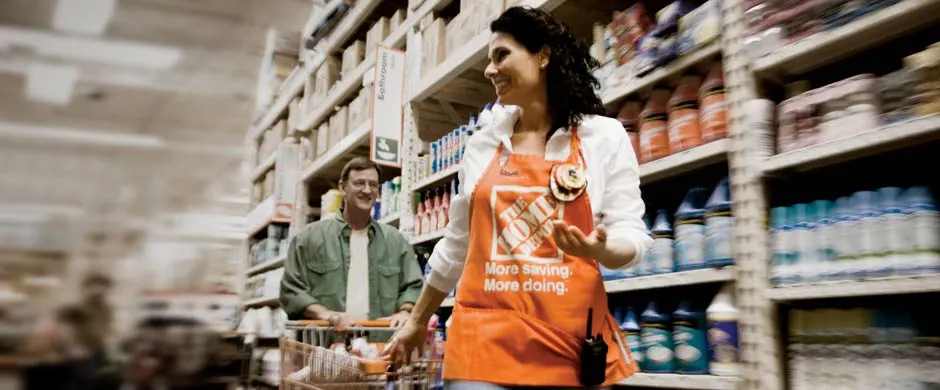Learn how the Kano Model is used to exhibit customer service, build trust, and deliver delightful experiences in product design. Dive in now with Anthroware.
Table of Contents:
- Delighting Users: The Essential Element of Product Design
- Understanding the Shift in Generational Expectations
- Utilizing The Kano Model for Customer Satisfaction
- Evolution of Basic to Luxury: A Trend in User Experience
- Cultivating Customer Trust through Delightful Experiences
Delighting Users: The Essential Element of Product Design
If you, or someone you know, has been around Anthroware for more than three minutes, you have likely been exposed to the idea of “delightful experiences”. When you hear “delightful experience”, maybe your mental schema brings up a memory of being a kid at Disney World. Maybe it’s the memory of the first time you reeled in a fish. Maybe it was just a pleasant day when the weather was nice and everything just fell in place and went your way.
Delight is hard to deliver. Delight is fragile. Delight is precious. It takes intense effort and time to build but can be shattered in seconds. Just like trust. Anthroware is in the business of delivering delight. In this article, we are going to show you how to use the Kano Model.
Understanding the Shift in Generational Expectations
Before we talk about Professor Noriaki Kano, let’s talk about the phenomenon of user experiences and customer service as it relates to generational expectations. The best experiences of one generation become the standard for the next. Not big generations like Boomers and Millennials, but more like the generational wave of a Product Life Cycle.

Travel accommodation experiences have changed with AirBnB disrupting the industry by delivering delight. A prime example is where hotels put outlets in rooms - because you need a place to charge your phone at night without moving a nightstand or unplugging a lamp. Homes do this naturally because you’ll want to plug your phone in at a very similar location to where I plug my phone in. Our customers have similar needs. Hotels weren’t originally designed that way. Accessible outlets are being retroactively installed in hotel rooms because the market disrupter elevated the standard of experience (AKA AirBnB delivered delight), challenging the incumbents.
Maybe that example is compounded by everyone traveling with at least 2 digital devices... so here's another example: restaurants. Restaurants are special by nature, offering a huge range of customer service and expectations. Regardless of going to your neighborhood Italian joint (shout out to Vinnie’s in Asheville) or your local Applebee’s chain, the menu will be online. If a restaurant’s menu is not online, they are delivering below-basic needs. The heightened experiences of the past continually become the future standard.
One more example, then I think the point will be driven home… internet speed. Who’s going back to a 56k modem any time soon? Probably no one, because no customer wants that kind of poor service in this modern digital age where speed is king. These days, a successful business or product with longevity is all about a good experience for the customer.
Utilizing The Kano Model for Customer Satisfaction
Professor Kano made a model to express these shifts in expectations and how customer service can be better understood using this model.
“The Kano model is a theory of product development and customer satisfaction developed in the 1980s by Professor Noriaki Kano, which classifies customer preferences into five categories.” (Thanks, Wikipedia).

The Kano Model is a powerful tool for understanding customer preferences and driving product features that evoke delight. This model classifies customer preferences into five categories: Attractive, One-Dimensional, Must-Be, Indifferent, and Reverse. Leveraging these categories, businesses can anticipate user needs, exceed expectations and create delightful experiences that foster trust and loyalty.
Evolution of Basic to Luxury: A Trend in User Experience
Over time, attributes drift from performance/high-end/luxury to essential/basic; like back-up cameras in cars. These were once luxury features and are now standard on every model of every new car. You see the same pattern with side/curtain airbags. It was once a high-end safety feature and is now standard.
If you are like us at Anthroware (building websites, apps, software), to deliver delight you must build an experience with an appropriate yet surprising feature set. Surprise the user by predicting their needs and wants. Now here’s the big secret – you don’t need to guess or employ consultants to discover the needs and wants of your customers to find that magical delight-delivering combination. All you need to do is test with real users, survey potential users, observe real users interacting with your products, and ask “why?” repeatedly. Understanding their motivation will reveal desired, and potentially unarticulated, experiences.
To achieve and deliver delightful experiences consistently, it's crucial to employ a structured approach. The Kano Model is an effective tool to understand user needs and translate them into actionable steps. Here is a step-by-step guide on how to apply it:
- Identify and Understand User Needs: Begin by conducting interviews, surveys, and user observations to gather qualitative data about what your users need and want from your product.
- Categorize User Needs: Using the Kano Model, categorize these needs into 'Must-Be,' 'One-Dimensional,' 'Attractive,' 'Indifferent,' or 'Reverse' features.
- Prioritize Features: Based on user feedback and business goals, prioritize which features to develop and improve.
- Design and Develop: Now that you understand your users' needs, start designing and developing your product or service. Aim for a mix of 'Must-Be,' 'One-Dimensional,' and 'Attractive' features for a delightful product.
- Test with Real Users: Validate your product with real users. Their feedback will allow you to refine and enhance the product further.
- Iterate: Use the feedback to iterate and improve upon your product continuously, thus nurturing trust and delight among your users.
Cultivating Customer Trust through Delightful Experiences
To truly connect with users, one must anticipate their needs, not merely react to them. The Kano Model, applied with sincerity and focus, can facilitate such predictive understanding. It's through this journey of understanding that we uncover the path to customer delight and trust. By centering our efforts on the user, we cultivate a rapport that elevates their experience beyond the transactional. It's about fostering relationships and understanding the unique narratives that underpin every interaction.
Give your users only what they want and let them guide you on how they want to get it. Delight doesn’t drop from the sky. It takes work, effort, and empathy. Just like trust. Deliver a delightful experience and your users will trust your products, and ultimately trust you. I hope the Kano Model alongside the context of this article has helped you see a different perspective on how to achieve delightful customer service.










